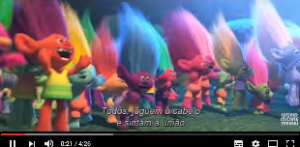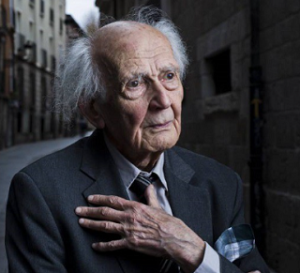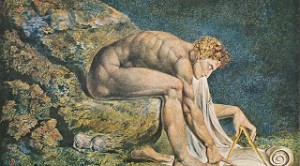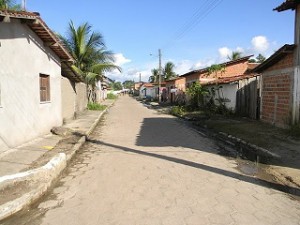
Arquivo para a ‘Calm Technology’ Categoria
Socrates, the good life and technology
Before ending the liberal education chapter, Socrates recalls his famous frase: “knowing oneself” and takes up the idea that “an unexamined life is not worth living”, as his interlocutor Peter Pragma leaves for Grab a coffee and brainstorm. In topic 3 of chapter I: Of the technology and the larvae, the friend who had gone to have a coffee came across the broken machine and said that he would become a technician.
“knowing oneself” and takes up the idea that “an unexamined life is not worth living”, as his interlocutor Peter Pragma leaves for Grab a coffee and brainstorm. In topic 3 of chapter I: Of the technology and the larvae, the friend who had gone to have a coffee came across the broken machine and said that he would become a technician.
Socrates recalls the short-lived and simplistic character of choosing a profession, and Peter claims that he can not stand any more interrogations, so Socrates thinks of a way to change the very methodology that is the question, “maybe there is a way” and Peter is encouraged.
But it would be illogical for Socrates to abandon his method, which he does is call a young girl named Marigold Measurer (something like measuring the Daisies, explains the footnote on page 42), the girl agrees but is intrigued by Socrates, psychologist.
But Socrates says, quite to the liking of a more contemporary philosophy, that he is a “sort of conscientiologist … I am a philosopher,” Marigold asks if it is his department, which he readily refutes, it would be contradictory to have a philosophy department, already That philosophy is not a department..
The conversation unfolds with Marigold maintaining a certain secret of his work, but reaffirming that the works today have a certain “hierarchy” and questions the place of the philosophy, and finally Marigold says that works with genetic engineering.
Socrates then questions the role of technology in subordinating nature and suggests that we are only “friends” of it, asks “why would you like to conquer your mother? We only conquer our enemies, “is on page 45.
Asked if he would not be afraid to “lose control” of his work, Marigold claims that his work is serious, to which Socrates asks if a wine producer is sober, “would it be right for him to give his product to an alcoholic?” Page 46.
The dialogue on technology is still going on, but we can keep Socrates’ question.
KREEFT, Peter. The best things in life. Illionois; IVPBooks, 1984, (edition Portuguese: Campinas: Ecclesiae, 2016).
Trolls is not trolling
I went to watch the cartoon Trolls, with my niece to disguise, much more childish than Frozen, the message is more interesting because it is collective and not Manichean.
with my niece to disguise, much more childish than Frozen, the message is more interesting because it is collective and not Manichean.
The film is in second place at the box office behind “Doctor Stranger,” and I think it’s worth it for now, according to ComScore data, the premiere of “The Light Between Oceans” can change these positions.
The story of Trolls is a sad community that has the only hope of living happiness devouring the Trolls, there being a special day of trollicide (day of eating trolls), the analogies with economic empires and the vision of exploitation of peoples, who are actually happy, And this is already a non-Manichean vision, it is very interesting, just like the final proposal.
The DreamWorks film is directed by Mike Mitchell (director Alvin and the Chipmunks 3 (2011) and SpongeBob SquarePants: A Hero Out of Water (2015)) and Walt Dohrn (Shrek creators), screenplay by Glenn Berger and Jonathan Aib, the dolls Trolls appeared in commerce in 1958.
Stephen Strange (Benedict Cumberbatch) is an arrogant surgeon who, after losing his hands in a car accident, sets off on a quest for healing and ends up finding redemption as the greatest magician in the Marvel universe.
Doctor Derrickson is a director, and a team writes the script: S. Robert Cargill, Jon Spaihts, Joshua Oppenheimer, Thomas Dean Donnelly and Scott Derrickson himself.
1 year Mariana (Brazil) tragedy
 A village of 600 people, which was part of the call route “Royal Route” in the seventeenth century, which had monuments and churches of cultural value, on 5 December last year was swept by 62 million cubic meters of mud, so off the map Bento Rodrigues, ten deaths and an ecological tragedy.
A village of 600 people, which was part of the call route “Royal Route” in the seventeenth century, which had monuments and churches of cultural value, on 5 December last year was swept by 62 million cubic meters of mud, so off the map Bento Rodrigues, ten deaths and an ecological tragedy.
The wave in eleven minutes devastated Mariana seven districts, also contaminated the North Gualaxo rivers do Carmo and the Doce River, still no signs of any recovery, and whose waste has reached the Holy Spirit and the sea.
Samarco mining was little known to the local population, but was considered successful model, and associated with a joint venture of Vale do Rio Doce and Anglo-Australian BHP Billiton, was 37 years old at the site.
In 2014 the company had revenues of 7.5 billion reais, with a net profit of 2.8 billion reais, but the company’s stock and worth plummeted and soon to Andrew Mackenzie, BHP Executive land in Brazil, and the chief executive of Vale Murilo Ferreira, and his colleague Ricardo Vescovi de Aragão of enterprise Samarco, tried to erase the negative image, but without success.
There are still doubts as ecological restoration, the role that regulatory agencies of the Minas Gerais State and the Brazil Government (Dilma in this time) exercised because today appear documents with evidence of the possibility of tragedy, a document spoke including that the death toll could reach 19, eighteen, it’s amazing the accuracy of the forecast.
One year later there are still shadows on the real culprits, besides engineers Samarco and the government monitoramente also the recovery of fauna and flora, the compensation of the affected follows in slow steps.
The pessimist Bauman again
In an interview with El País, the pessimist Bauman strikes again, not I say but it is with all with all letters in the book “Bauman is considered pessimistic. His diagnoses of reality in his later books is extremely critic. “, Can be read in the journal.
Although with proper diagnosis, your remedy is deadly in the wealth of the few  benefits all of us? said the high price paid today by the triumphant neoliberalism of the 80s and the ‘thirty opulent “that followed, led to a” big lie “(which is true), but do not see novelty in the new parties, dreams of what? the return of the Politburo?
benefits all of us? said the high price paid today by the triumphant neoliberalism of the 80s and the ‘thirty opulent “that followed, led to a” big lie “(which is true), but do not see novelty in the new parties, dreams of what? the return of the Politburo?
Attacks the lack of networks, says she would be opposed to “community,” he said in the interview: “The question of identity has been transformed from something pre-established in a job: you have to create your own community. But it does not create a community, you have one or not; what social networks can generate it is a substitute. The difference between the community and the network is that you belong to the community, but the network belongs to you. “, He creating a fictitious duality.
It is clear that never participated in a virtual community, which is not unrealistic, we expect him despite his age one day make the experience, and will find that not only will be in a community and will be much more open, and transparency (that is registered ) is clearer, and also easier to be tested and observed.
Pessimism Bauman goes to the extreme to deny “progress” coming to call it myth, he says, for example: “austerity policies will continue, they could not stop them, but can be relatively effective in introducing new forms of do the things.”
The interview makes it clear that he knows that new forms of expression and proposals exist, but he himself confesses: “I am not able to prophesy. We are experimenting with new ways of doing things”, he said to the daily, but cannot and never will succeed, why not propose anything, just give your negative diagnose problems are there to solve and propose.
The resulting liquidism´s baumanian is inertia, criticizing the network and new forms of manifestations and the methodology of his pessimism, which proposes?
e-Estonia: a digital country
Since its independence from the former Soviet Union (20 August 1991),  Estonia decided it would be a country that would remain connected, decentralized, on an open platform infrastructure and a continuous process to keep improving, calling it four principles in its site.
Estonia decided it would be a country that would remain connected, decentralized, on an open platform infrastructure and a continuous process to keep improving, calling it four principles in its site.
The two key points of this e-citizenship is the identity card or e-ID and decentralized connection called infrastructure X-Road, they open the door to all state services, social and economic data, and the eID identification able to verify the identity of a person around the online environment.
The people of Estonia are the source of the Phoenicians, but are intimate and ethnically related to Finnish and Sami (northern Norway), so with historical links to all of Scandinavia, and the port of Tallinn as its capital and largest city, with the all over the country about 1 million and a half inhabitants.
With this economy has benefited from the strength of the electronics and telecommunications sectors and strong trade ties with Finland, Sweden, Russia and Germany.
The system of government is parliamentary with a Congress of 101 deputies elected directly by the vote of the citizens.
Estonia joined the European Union on 1 May 2004, while Latvia and Lithuania, has a GDP of US $ 35,398, which gives a per capita income of $ 26,000.
(Português) Infraestrutura nas cidades
Among the items analyzed by IBEU, although sanitation is a priority, most notably  among negative aspects is the urban infrastructure (sidewalks, paving, street lighting, etc.) as 91.5% are in bad levels and very bad , corresponding to 2,579 as bad (46.3%) and very bad (45.2%), ie, the issue is very serious.
among negative aspects is the urban infrastructure (sidewalks, paving, street lighting, etc.) as 91.5% are in bad levels and very bad , corresponding to 2,579 as bad (46.3%) and very bad (45.2%), ie, the issue is very serious.
The data shows that are great urban problems of Brazilian municipalities. Perhaps the main is the urban infrastructure (paving, sidewalks, street lighting etc.), as 91.5% of the municipalities are in bad and very bad levels, corresponding to 2,579 as bad, and 2,516 as very bad.
Among the capitals, those with good to average conditions are: Victoria (1), Goiania (2), Rio de Janeiro (3) São Paulo (4), Curitiba (5), Belo Horizonte (6), Brasilia (7) , Porto Alegre (8) and Florianópolis (9), are in poor condition: Aracaju, Campo Grande, Palmas, Recife, Salvador, Fortaleza, Teresina, Manaus, Natal, Cuiabá, João Pessoa, São Luís, Maceió and Bethlehem, and very bad conditions: Rio Branco (24), Boa Vista (25), Porto Velho (26) and Macapá (27).
There are only 441 municipalities in average conditions of well-being as urban infrastructure, 28 have good conditions, and only one in very good condition that is Camboriú (SC).
The map shows small regions between light yellow and blue mean the conditions is average and good, while shades of red indicate the poor and very poor conditions.
Brazilian municipal elections and poverty
In the current context of the municipal elections, at which most of
the candidates all over the country are debating proposals for cities and their management, the Observatório das Metrópoles promotes the release of the Urban Welfare Index of Brazilian Municipalities (IBEU-Municipal) with the purpose of providing another tool for evaluation and formulation of public policies.
The index shows a new survey on urban conditions of the 5,565 Brazilian municipalities, from the analysis of dimensions such as mobility, urban environmental conditions, housing conditions, collective services and infrastructure.
The Municipal-IBEU shows that among the greatest challenges in Brazil are the infrastructure and collective services. In evaluating the proper treatment of water and sewage, waste disposal and energy services, more than 50% of the municipalities are in bad conditions in these services.
The ranking of better cities in Brazil, in general smart cities with populations less than 17,000 habitants, concentred in São Paulo State is:
| Municipal Code | Name of the cities | Code UF | State of UF | IBEU | Ranking IBEU |
| 3508207 | Buritizal | 35 | São Paulo | 0,951 | 1º |
| 3547650 | Santa Salete | 35 | São Paulo | 0,941 | 2º |
| 3553658 | Taquaral | 35 | São Paulo | 0,937 | 3º |
| 3513850 | Dirce Reis | 35 | São Paulo | 0,936 | 4º |
| 3547205 | Santana da Ponte Pensa | 35 | São Paulo | 0,936 | 5º |
| 3515657 | Fernão | 35 | São Paulo | 0,934 | 6º |
| 3500600 | Águas de São Pedro | 35 | São Paulo | 0,934 | 7º |
| 3540002 | Pompéia | 35 | São Paulo | 0,932 | 8º |
| 3103108 | Antônio Prado de Minas | 31 | Minas Gerais | 0,931 | 9º |
| 3557105 | Votuporanga | 35 | São Paulo | 0,931 | 10º |
| 3158409 | Santana de Cataguases | 31 | Minas Gerais | 0,930 | 11º |
| 3510104 | Cândido Rodrigues | 35 | São Paulo | 0,929 | 12º |
| 3530003 | Mira Estrela | 35 | São Paulo | 0,929 | 13º |
| 4202008 | Balneário Camboriú | 42 | Santa Catarina | 0,928 | 14º |
Among the 15 Brazilian cities with better IBEU index, 12 are in the state of São Paulo, two in Minas Gerais and Santa Catarina, but between the capital Sao Paulo is only 12th.
Among the worst the city President Sarney in Maranhão State is more poverty, with rate is 0,444.
Technology, media and Heidegger
The question of technique brings the essence, which means in clearer terms what is the “agency means to achieve the purpose,” for this use technology causes unease in some, it is necessary to understand the “means” They are used for certain “ends”.
what is the “agency means to achieve the purpose,” for this use technology causes unease in some, it is necessary to understand the “means” They are used for certain “ends”.
Aristotle classified into four causes set for operative purposes, which in a sense are the means where the efficient cause (which reaches the ends), is one that more properly is tied to products or effectuation of the effects.
For the record the other three causes: the material, the substance that is made right thing, the formal, the essence of the thing and the end: why something exists, it is that many confuse.
In the Greek meaning the cause is walking in operative relationship, ie the effectuation can be replaced as the commitment, and the four causes can be seen as compromising the production of a thing.
Thus overcomes the idea of making something from something to an end, and we must reject even what is called use “conscious” thing “, you may have a personal interpretation or even utilitarian than is this use.
Heidegger’s sense is let go, the ocasionamento or what comes to appear, so a child is surprised by the technique and the adult is concerned, it happens something new in what may be called the natural plane, with the difference that the technically produced, that is let appear through a built environment and not something in the nature.
What appears again in Heidegger’s text “The question of technique” is that the question is not left out, but is a fit between means and ends, leaving the purely instrumental sphere to the “unveiling” of the technique, which in sometimes it’s hard throughout complexity that hides it;
What it does is establish a relationship between the use of the technique and the truth, which remains trapped when it makes its use without establishing this relationship, which means the representation of an end to the use of a technique, ie, check if we make “accurate representation” what you want to achieve (end) using this medium (technique).
The dancer Amy Purdy made a presentation of a dance accompanied by an industrial robot in Paraolimpic overture, representing man’s relationship with technology (Picture).
Social media and say nothing !
The media show that many people still use it improperly, to finish the chef master program, which did not watch because cooking is a pleasure and an art, the chef Paola Corosella a judge yesterday finalized program, calls craft, but she also complained of insults, profanity, etc. who suffered for their options in the program.
chef master program, which did not watch because cooking is a pleasure and an art, the chef Paola Corosella a judge yesterday finalized program, calls craft, but she also complained of insults, profanity, etc. who suffered for their options in the program.
What most surprises me is people who say nothing and saw celebrities, there are a lot of good is good to say, but I get at least three times many slogans of self-help, pocket spirituality and the like, do not tell me anything and it’s nice not complain, then more people come to send you the same messages.
Will Stephen was invited to participate in the famous TED programs to talk about anything, that first taste for the duration of maximum 20 minutes and then because they choose people who have what to say, I do not even like it, but I recognize someone who has something to say. He produced a fun program, and then says that guy because we are “attentive and eager to know everything about NOTHING or how to do, an uninteresting subject, subject to six minutes of pleasant thing,” here are six tips that he gave:
First I KNOW !!! No matter you are unsure, speak with absolute certainty what you are saying, many will watch and to become his followers. According gesture! His body language may appear to have convincing ability, emphasize information with gestures or changing the tone of speech, especially when talking about something that judges relevant.
After EI YOU !!! Interact with your audience, giving examples of personal or things of everyday life, it creates a relaxed mood and people can be Understanding NOTHING.
If it is difficult to assign a third NOT I AM I AM SAYING, say that the person is important and then repeat if necessary.
USE IMAGES, illustrious, create pictures, decorate the way of his speech, abusing of audiovisual resources, and last has RHYTHM, do your talks follow the ideas to completion.
But you can still be talking about ANYTHING, one will listen.
The aesthetics and philosophy
Lost a little of aesthetics and philosophy within what is called “art” but in Greek philosophy had a broader meaning the Greek term aisthetiké, literally can be “one who note that realize” so it is in the eye of the beholder, more than the look of the artist, then signifying the perception of beauty, harmony.
Greek philosophy had a broader meaning the Greek term aisthetiké, literally can be “one who note that realize” so it is in the eye of the beholder, more than the look of the artist, then signifying the perception of beauty, harmony.
For german´s philosopher A.G. Baumgarten, to describe what in his time was called “criticism of taste”, in a way so it may mean our perception of culture.
Over time, the philosophy has always wondered about the essence of the beautiful, a central theme of aesthetic study for Plato meant good, and the origin of all aesthetic idealist this notion remains, but in the case of Aristotle, she It means two most realistic principles: imitation theory (reminiscent of modern virtuality) and catharsis.
The neo-Platonic theory of Plotinus that strongly influenced A.C.C. Shaftesbury (English school of moral feeling) and that influence some conceptions of romantic idealism, you see only the beautiful as manifestation of the spirit and see this in Hegel.
To correctly read Hegel, we need to regain French classicism (Descartes and Boileau-Despréaux), which will appear the concepts of “clarity” and “distinction” as beauty criteria, where it is clear the influence of reason.
The idea of beautiful and sublime, will corroborate what Kant determines how character “a priori” of aesthetic judgment, identifying the beautiful as an “endless purpose” or as “science of all principles a priori of sensibility,” is the transcendental aesthetic.
This school will be names like Schiller, Goethe and W. von Humboldt, and influenced Hegel.
The William Blake’s painting (1957-1827) obre Newton (Figure) illustrates this period.


